-1.jpg)

Click on each image to view and download. Share on social media sites like Facebook, Instagram, and LinkedIn.
Copy and paste from the sample tweets below, or download them all as a .DOCX file.
Reserve your tickets for ANGST, a new documentary about anxiety. We want to start a conversation! #AngstMovie @iNDIEFLIX ___________(include your personal link here)
Candid interviews w/ real teens about anxiety, tools that help and hope. ANGST movie screening, details here: _________________ @iNDIEFLIX
Join us for a free screening of ANGST, a film about anxiety, truth & hope. Really. Let’s talk. #AngstMovie @iNDIEFLIX ___________ (include your personal link here)
We see a lot of anxiety in our schools. By sharing this film, ANGST, we hope to lessen our angst. Join us: ________ (your link) #AngstMovie @iNDIEFLIX
Do you suffer from anxiety? Does your child? Partner? Learn how to cope & find hope. ANGST screening on XXX, XX/XX: ____________ @iNDIEFLIX
Real talk and real people dealing with real anxiety. As it turns out, talking is the best thing for anxiety. Come learn more: ________________ @iNDIEFLIX
Covid has affected everyone’s mental health, and anxiety is a very common and natural reaction. #AngstMovie breaks down what’s going on, so we can move forward. Join us on XX/XX (insert your link) @iNDIEFLIX
If you’re dealing with Covid anxiety, don’t suffer alone. Join us at a screening of #angstMovie @indieflix to learn tools and tips on how to deal with this very treatable condition. (insert your link) @iNDIEFLIX
It is perfectly normal to feel anxious sometimes. It’s an important emotion to feel, because it lets us know how important the outcome of our activities is to us (i.e., if we don’t care, we won’t feel anxious) and it also lets us know when we’re in danger. A little bit of anxiety is a good thing and can enhance your performance on tasks (e.g., a little bit of anxiety about an exam makes you study harder, and thus, you could perform better). Alternatively, too much anxiety can affect our judgment and our ability to make simple decisions. Although there are occasions when high levels of anxiety are totally normal (like dangling off the ledge of a 10-story building), some people’s bodies send them mixed signals, making them think that they are in danger when they’re not (just looking out the window of a 10-story building). When this anxiety starts interfering with someone’s ability to live a normal life, it’s considered an anxiety disorder. Anxiety disorders cause substantial emotional, cognitive, and behavioral difficulties, and are one of the most common and most treatable mental disorders.
Agoraphobia is characterized by avoiding situations where escape might be difficult or embarrassing. The fear can be so intense that it leads some individuals to become completely housebound.
Panic Disorder is characterized by intense feelings of fear or terror, which come on for no apparent reason (i.e., panic attacks). Symptoms may include: dizziness, trembling, shortness of breath, heart racing, sweating, thoughts of death or dying, and chest pain. These attacks occur frequently and are associated with intense anxiety about getting another attack and avoidance of situations that may cause them.
Social Anxiety Disorder (a.k.a. Social Phobia) is characterized by avoidance of certain social or performance situations due to fear of being judged by or embarrassed in front of other people (e.g., fear of public speaking or eating in restaurants.)
Specific Phobia is characterized by intense fear of a specific situation or object, often leading to avoidance. (e.g., fear of heights or spiders.)
Obsessive-Compulsive Disorder (OCD) is characterized by recurring unwanted anxiety-producing thoughts (obsessions) and repetitive behaviors designed to reduce the anxiety caused by the obsessions (compulsions). The excessive amount of time given to these obsessive thoughts and compulsive actions often gets in the way of the person’s ability to function normally. For example: fear of contamination (obsession) and constant hand washing (compulsion). Although the obsession and compulsion are clearly linked in this example, often the compulsion has no obvious connection to the obsession it’s meant to alleviate.
Generalized Anxiety Disorder (GAD) is characterized by excessive worrying about a number of events or activities. People with GAD often experience restlessness, difficulty concentrating, irritability, muscle tension, headaches, fatigue, and sleep disturbance.
Post Traumatic Stress Disorder (PTSD) is characterized by repeated re-experiencing of a severely traumatic event (e.g., war, natural disaster, rape, assault, witnessing a murder) accompanied by increased arousal and avoidance of places and situations that remind the person of the event. For a diagnosis of PTSD, these symptoms need to last for at least one month. Most people exposed to a traumatic event will not develop PTSD.
Although not a substitute for treatment, the following tips can be helpful for people with an anxiety disorder and people experiencing regular anxiety.
Exercise – Exercise helps both physically and mentally.
Relax – Learn deep breathing techniques (such as Box Breathing); consider trying yoga or meditation.
Get enough Sleep – Try to get 8 to 9 hours of sleep each night.
Learn to laugh – Laughing decreases anxious feelings
No alcohol & drug consumption – Be careful not to use alcohol, nicotine, or other drugs to “self-treat” anxiety.
Reduce caffeine intake – Caffeine makes your heart race, which can make anxiety worse.
Eat a well-balanced diet – Eating healthy, well-balanced meals and avoiding junk food when possible keeps you in your best form, so you’re better able to cope with anxiety-provoking situations.
Create a support network – Talk to friends you can trust.
Learn to manage your time – Putting tasks off can become overwhelming. Get organized and review your daily tasks each morning. Break larger, more intimidating tasks down into smaller steps. Focus on one step at a time. Learn to do the most important things first.
Challenge your perfectionism – Chill out, praise yourself for trying.
For more information on how to help yourself be well, visit:
http://teenmentalhealth.org/toolbox/taking-charge-health-daily-checklist/
Anxiety Disorders require professional treatment, including psychotherapy and/or medication.
Medications: Selective Serotonin Reuptake-Inhibitors (SSRIs)
For many people, mild to moderately severe Anxiety Disorders can be effectively treated with psychological interventions. Medications generally are considered for use if psychotherapy alone is not producing the hoped for results.
Cognitive Behaviour Therapy (CBT)
CBT is a form of talk therapy, which teaches specific thinking and behavioural skills. The goal of CBT is to help people to challenge their current way of thinking, so they can learn to change their anxious negative thoughts and gain control over their anxiety. CBT also teaches people to relax, problem-solve, and gradually face their fears. Gradual and supported exposure to the frightening situation/object is the most effective way to treat anxiety.
Avoidance of anxiety producing situations is also discouraged in CBT, as it only serves to make anxiety worse.
More information on CBT
http://cogbtherapy.com/about-cbt/
DBT: Dialectical Behavioral Therapy is a cognitive behavioral treatment developed by Marsha Linehan, PhD, ABPP. It emphasizes individual psychotherapy and group skills training classes to help people learn and use new skills and strategies to develop a life that they experience as worth living. DBT skills include skills for mindfulness, emotion regulation, distress tolerance, and interpersonal effectiveness.
Depending on the person’s needs, therapy can last 6-8 weeks or longer, usually with weekly or twice-weekly meetings. Some people may be able to resolve their anxiety sooner, whereas others may need more time. Often, people benefit from “booster sessions” over time to help maintain their gains and prevent the anxiety disorder from returning. Medications can be used to help with specific situations (such as in a fear of getting on an airplane) or they can be used for longer periods of time (e.g., 3 – 6 months), in order to decrease anxiety to the point where the individual is able to actively work on their fears in therapy.
Having supportive and understanding friends is an essential component to recovering from an anxiety disorder. How can you help?
Educate yourself – Understanding what your friend is going through will help you better support them. It will also help alleviate frustrations that you may have about his or her behaviour.
Be supportive – Encourage your friend when he or she is having a tough time and be empathetic to what he or she is going through. Be respectful but do not support avoidance of stressful situations.
Don’t try to change your friend – Modify your expectations of how you want your friend to be and accept your friend for who he or she is.
Communicate – Be sure to listen with a nonjudgmental attitude. Help him or her find treatment. Sometimes it’s hard to take the first step alone. Be a good support and encourage your friend to get help.
Encourage – Encourage your friend to confront stressful situations and support them through the experience, rather than avoiding anxiety-provoking situations. Avoidance can actually make the anxiety disorder worse.
Be fun – Sure it’s good to have someone to talk to, but your friends need you to keep the fun going. Help make them laugh and relax.
Be Specific: Address your stress inducing thoughts and label them concretely. Make a list at the end of each workday and evening (at home) with the labeled stressors and an action plan of completion. Even if the items of stress are not task oriented in nature, it is beneficial to label them and write them down (for example, “Concerned about my daughter’s lack of interest in school. Plan – take her for a drive and begin a conversation.”)
Take a Break and Distract: If you feel your thoughts becoming clustered and overly emotional, or the beginning stages of anxiety increasing, get up and move for 5-10 minutes. Take your thoughts and body to a new location, even briefly, to grab a drink in the lounge, or to your car to listen to music for a moment. Distracting your thoughts will allow your brain to function in an organized and efficient manner.
Don’t Isolate (for long): It can be helpful to distract your mind and give yourself some space for a short period, but prolonged isolation can lead to avoidance of anxiety producing situations, which reinforces the negative thought process. Do what you fear, be it networking socials or assertively stating your idea in a meeting.
Model Emotional Honesty and Reach Out: Let your coworkers and loved ones know if you are feeling stressed, create an environment where all emotions are labeled and acknowledged. Address your needs.
Every child/situation is different, and that there is a lot of gray area. There is not always a right and wrong. There is a what works for this particular child, what have they been able to articulate as useful or helpful in decreasing their anxiety. Picking a child up from school is very different than allowing them to take a break from class – on a break they are still IN the school, but just using a coping tool so they can STAY in the school. Actually leaving the school could contribute to the anxiety, and if the parent is always picking up the child, they are unknowingly playing a role that may not be helping the situation.
-Answered by Cathy Cassani Adams, LCSW, Chicago/Zen Parenting Radio
The filmmakers explained that the people in the film didn’t mention medication. The core of the movie is really about that we are “built” to cope with the challenges of anxiety – that within the challenge of anxiety, we have innate coping tools that can help us manage what we are experiencing (breathing, breaks, counting, asking for help, even the use of ice cubes…). In some situations people are so deeply anxious and so in a “hole” that they need a “ladder” just to get to the point of finding these innate coping tools. In these situations, medication can be really helpful, because the med allows the person to climb out just enough to reach for an innate coping tool. And sometimes meds are used alongside coping tools to deepen a practice. There are times when clients ask for a med, but then chooses to not explore other ways to cope/manage what they are experiencing. In these cases the med can become a band-aid, because the core issues are not being addressed and innate coping tools are not being utilized. We are lucky to have meds available for when they are needed, and for some, they can be the difference between life and death. But for most, if used, they should be used as a tool to access what we already innately have available to us – they are a ladder to reach a solution rather than the entire solution.
-Answered by Cathy Cassani Adams, LCSW, Chicago/Zen Parenting Radio
The more we normalize words and not shy away from them, the more we are capable of having honest conversations about how we are feeling. But we should be careful of our tone/body language when we talk about anxiety, because if we are using the word and then looking/sounding afraid, we are doing the exact opposite of what we are hoping to do (normalize/validate). So it takes a lot of self-awareness on the part of the parent to become comfortable with anxiety, what it is, what it means, and how one can cope – so the conversation with our kids can be grounded and calm rather than filled with fear.
-Answered by Cathy Cassani Adams, LCSW, Chicago/Zen Parenting Radio
I am a mindfulness teacher, so I appreciated this question. I talked about meditation (but also used the words stillness, quiet, and calm as synonyms so people don’t get too caught up in the word “meditate”). Daily stillness/meditation can strengthen the mindfulness muscle, which means creating some space between stimulus (like a feeling of anxiety) and reaction (becoming more anxious about feeling anxious). A meditation/stillness practice can help us RESPOND, rather than REACT. We can practice noticing a feeling and then choosing to breathe through it, rather than react to it. Anxiety will still show up, that’s part of being human, but being mindful means we can decrease the pressure of the feeling, or sit with the feeling until it passes (rather than getting more anxious about feeling anxious).
-Answered by Cathy Cassani Adams, LCSW, Chicago/Zen Parenting Radio
Daily meditation/stillness is like “working out” this mindfulness muscle every day, so then we can use it in present time when something anxiety provoking actually occurs. Compare dealing with anxiety to running a marathon – to run a marathon, we need to exercise our bodies on a daily or weekly basis so we are ready to perform during the race. A meditation/stillness practice is exercising the brain by noticing and breathing through thoughts – then when an anxiety-provoking situation arrives, we can actually “perform” what we’ve been practicing. Other ways to practice mindfulness – breath work, yoga, walking meditations, visualizations. Anything that helps the brain “practice” calming down.
-Answered by Cathy Cassani Adams, LCSW, Chicago/Zen Parenting Radio
A little girl asked about how to manage her panic attacks. In front of the crowd I told her that the only thing she needs is her breath – that her thoughts feelings may not be clear, but if she can remember to breathe, she will slow down every part of her body and mind. It may not “stop” it immediately, but it will keep it from getting worse and help ground her. I talked with her (and her mom) for a long time after the movie – we talked more about things that preceded the panic attacks and how they could work together to decrease the anxiety before they took hold (the little girl admitted to being a perfectionist with homework, and this would make mom anxious and annoyed, and then it would just escalate, etc…).
-Answered by Cathy Cassani Adams, LCSW, Chicago/Zen Parenting Radio
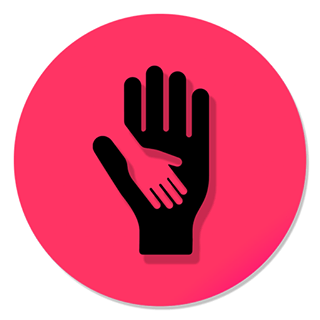
iOS
Utilises some of the best CBT (Cognitive Behavioural Therapy) and ACT (Acceptance Commitment Therapy) methods to help you cope with Depression, Anxiety, Anger, Stress and more.

iOS, Android
A reliable back-pocket support system for veterans who experience challenges from traumatic brain injuries (TBI).
For Adults

iOS, Android
Home to more than 2,600,000 meditators, Insight Timer is rated as the top free meditation app on the Android and iOS stores.
Child Mind Institute
Dedicated to transforming the lives of children struggling with mental health and learning disorders.
Symptom Checker
The Symptom Checker analyzes your answers to give you a list of psychiatric or learning disorders that are associated with those symptoms.
Anxiety Basics
In this guide you’ll learn the signs and symptoms of different anxiety disorders, and how they are treated.
Parents Guide to Getting Good Care
“In this guide we take you through the steps to finding the best professional (or team) for your child, and the most appropriate treatment for the disorder or disability.”
Teen Mental Health.org
Great resource on Teen Mental Health for teens and families
ok2Talk
A place where teens can share what’s on their mind
National Suicide Prevention Lifeline
24-Hour Suicide Hotline
1-800-273-TALK (8255)
National Alliance on Mental Illness
The nation’s largest grassroots mental health organization dedicated to building better lives for the millions of Americans affected by mental illness.
National Institute of Mental Health (NIMH)
Transforming the understanding and treatment of mental illnesses.
Substance Abuse and Mental Health Services Administration (SAMHSA)
The agency within the U.S. Department of Health and Human Services that leads public health efforts to advance the behavioral health of the nation.
Behavioral Health Treatment Services Locator
A confidential and anonymous source of information for persons seeking treatment facilities in the United States or U.S.
Depression and Bipolar Support Alliance
DBSA provides hope, help, support, and education to improve the lives of people who have mood disorders.
http://kathyeugster.com/articles/article004.htm
Anxiety in Children
Generalized Anxiety Disorder Basics
In this guide you’ll find common signs and symptoms of GAD, criteria used for diagnosis and up-to-date treatment options.
Acute Stress Disorder
Acute Stress Disorder is a less severe and long-lasting condition than the better-known post-traumatic stress disorder (PTSD).
Separation Anxiety Disorder Basics
In this guide you’ll find information on how to recognize separation anxiety, how it’s diagnosed and how it’s treated.
https://www.helpguide.org/
Separation Anxiety in Children
https://www.teenlife.com/category/therapeutic/
Therapeutic Schools
http://anxieties.com/
Links to Dozens of Anxiety Related Resources
https://www.nimh.nih.gov/health/topics/anxiety-disorders/index.shtml
Types of Treatment
ADAA.org
The Anxiety Disorders Association of America, the national non-profit organization for consumers, clinicians and researchers.
ADAA: Anxiety Screening Tools
Screen yourself or a family member for an anxiety disorder or depression.
American Psychological Association
How stress affects your health
Anxiety Australia
Helpful resources for those in Australia.
Anxiety Coach
Lots of good advice on several anxiety disorders from a leading expert.
Anxiety No More
Informational site from an ex-sufferer of anxiety.
Anxiety Recovery
Anxiety Disorder Treatment and Recovery in West Los Angeles.
BluePages
Comprehensive, evidence-based information about depression and its treatment (including medical, psychological and alternative therapies). BluePages also includes interactive depression and anxiety quizzes, descriptions of the experience and symptoms of depression, a relaxation download, and extensive resources for help. Participation is free and anonymous.
Calm Clinic
A website that shows anxiety sufferers where to start treating their anxiety. It covers topics such as treatment, symptoms, causes, methods, specific issues related to anxiety, diet considerations and many other topics.
Depression Guide
Guide to the entire range of mental health disorders. Shows that anxiety disorder has many different forms as well as degree of severity with treatment options.
Ecouch.anu.edu.au
e-hub’s latest interactive self-help program includes modules for social anxiety, generalised anxiety and depression. It provides self-help training drawn from cognitive, behavioural and interpersonal therapies as well as relaxation and exercise. Participation is free and anonymous. Modules for panic disorder, bereavement and relationship breakdown will be deployed in 2010.
www.factsforhealth.org
Resources for social anxiety and PTSD from a non-profit organization.
www.healingwell.com
A guide to diseases, disorders and chronic illness. Go to “Conditions” and find the Anxiety-Panic Resource Center.
www.health-care-clinic.com
Online health care guide for family, men, women, child. Information on all diseases with their symptoms, treatment, causes and info on drugs starting from A to Z.
www.myanxietycompanion.com
Developed by women who suffers from an anxiety disorder who wants to impart her opinions, book reviews, and other self-help and consumer guidance for others with anxiety.
www.soberrecovery.com
Alcohol, drug abuse and recovery issues in general
www.total-health-care.com/
Advice on how to maintain a healthy lifestyle from infancy to old-age.
https://upgradedpoints.com
This is a fine review of some basic but helpful resources for the fear of flying, including some newer apps and a high-quality, infographic.
www.way2hope.org/changing_mental-emotional_health.htm
Help with fear, anxiety, insecurity, panic, depression, grief, addictions, eating disorders, etc.
Waypoint Academy
A specialized boarding school of 36 students and is dually-licensed as an independent school and residential treatment center.
Forefront
A Washington State nonprofit offering advances in innovative approaches to suicide prevention … Goal: To reduce the suicide rate in Washington State by twenty percent by 2020.
The Stability Network
A growing community of people who successfully live and work with mental health conditions. We openly share our own paths to stability to inspire hope and help others find theirs.
Kelty Mental Health
A provincial resource centre that provides mental health and substance use information, resources, and peer support to children, youth and their families from across BC.
Anxiety BC
A leader in developing online, self-help, and evidence-based resources on anxiety and anxiety disorders.
Teen Mental Health (Dr. Stan Kutcher)
Works to create, develop and deliver nationally and internationally recognized research, education and clinical programs by collaborating with health care providers, policymakers, schools, the business community, non-profit organizations and the general public.
Foundry BC
Everyone feels anxious at times, but too much anxiety can get in the way of daily life. Anxiety can become a problem when it doesn’t go away, gets worse and/or makes it hard for you to do the things you want to do.
Kids Health
What is anxiety?
Anxiety.org: 4 Steps to Finding the Right Therapist for You and Your Anxiety
This article will provide some suggestions for where to start and what sort of questions you should be asking when you evaluate a therapist.
Mental Health Resource Guide for College Students | Maryville Online
Whether you or a loved one is a student is seeking support, the following information and resources curated by Maryville University Online may help provide some insight and relief.
ok2Talk
A place where teens can share what’s on their mind
www.anxietyzone.com
Offers a nice community forum for questions and answers.
WebMD: What Are Support Groups for Anxiety?
Hearing from others who know what it’s like can make you feel less isolated and help you find new ways to deal with nervous feelings.
www.stresscenter.com
Offers newsletter, on-line chats and other resources.
www.recovery-inc.org
Recovery, Inc. is a nonprofit mental health self-help organization that offers weekly group meetings for people suffering from various emotional and mental conditions.
www.panicsurvivor.com
This site offers news, survivor stories for all anxiety disorders, a bulletin board and forums.
Panic Disorder Basics
This guide explores the signs and symptoms of panic disorder, how it is diagnosed and the best treatments.
www.panicattacks.com.au
A straight-forward web site offering guidance for those with panic attacks from someone who has been there.
www.paniccure.com
Inspiration and guidance for those healing from panic disorder and agoraphobia.
www.panicend.com
Suggestions for responding to panic attacks from someone who’s been there.
www.panicla.com
Offers definitions of terms regarding anxiety disorders and treatment options. Also find out about their book, Living with Panic Disorder.
www.panicattackhelper.com
Information and motivation for people who suffer from panic attacks and anxiety.
www.doyoupanic.co.uk
A personal case study of one person’s recovery from obsessive panic.
Parents Guide: How to Help A Child with OCD
This guide explains the often confusing behaviors that can be associated with OCD in children, and the effective treatments for helping kids who develop it.
www.ocdcentre.com
Serving OCD sufferers and their families in the UK. Offering free and fee-based service.
www.ocdeducationstation.org
OCD Education Station” is a unique resource designed to educate school personnel on how to identify and assist students who may have symptoms of OCD Also a great tool for parents working with school personnel on managing their child’s OCD.
www.OCDHOTLINE.com
OCD Hotline of NY/NJ offers visitors the chance to submit their confidential questions and get a FREE reply within 24 hours, with no obligation.
www.ocduk.org
Developed to assist people in the United Kingdom who suffer from OCD.
www.ocd-world.org.uk
information, advice and support to those with obsessive compulsive disorder
Social Anxiety Disorder Basics
Social Anxiety Disorder Basics
www.socialanxietyassist.com.au
Helpful resources on social anxiety in Australia
www.speakeeezi.com
Overcome stage fright with gradual exposure in manageable steps. The Public Speaking & Social Anxiety Clinic of New York
www.shakeyourshyness.com
A site dedicated to helping people overcome shyness through education.
www.shypassions.com
Free online community site for shy and socially anxious singles.
http://personalself.com/how-to-overcome-shyness/
A great set of 24 actionable steps you can take to overcome social anxieties.
www.helpguide.org/
Social Anxiety, Social Anxiety Disorder / Social Phobia: Symptoms, Types, Causes, Treatment, and Support
www.factsforhealth.org
Resources for social anxiety and PTSD from a non-profit organization.
National Institute of Mental Health: Post-Traumatic Stress Disorder
PTSD is a disorder that develops in some people who have experienced a shocking, scary, or dangerous event.
www.factsforhealth.org
Resources for social anxiety and PTSD from a non-profit organization.
www.DivePsych.com
Information on panic and PTSD in scuba divers.
http://forterustreatment.com/ptsd/
Comprehensive set of pages, outlining the essence of PTSD and the various options for treatment.
www.giftfromwithin.org
A non-profit organization that is a resource for PTSD (post-traumatic stress disorder) survivors and caregivers.
http://www.onthewagon.org/mental-health-and-exercise/
Here is a solid, well-done summary about how exercise can help anxiety, PTSD and depression.
Miami Helicopter
This page gives a brief summary of suggestions to overcome the fear flying.
Fear of Flying School
This is a wonderful resource, providing a great deal of information, for free, to those who want to fly more comfortably.
Fear Free Flying
focuses on coping with flying anxiety and aerophobia.
Dental Fear Central
Self-help for anyone suffering with dental phobia, anxiety, or specific dental fears. Includes a support forum and dentist recommendations and reviews.
www.dentalphobia.co.uk
written by dentists who specialize in treating people with dental phobia. An excellent source of information and advice.
DivePsych
Information on panic and PTSD in scuba divers.
Hypnoperth
Nice brief overview about phobias and panic attacks and several methods of treatment.
Paruresis.org
A non-profit organization for anyone suffering from shy bladder.
MindfulRecovery.com
Life-long anxiety reduction is taught in a 8 phase program that integrates Mindfulness Meditation and Cognitive Behavioral Therapy.
USC School of Social Work
USC School of Social Work’s online MSW program provides a Mindfulness for Healthy Living Toolkit containing a list of mindfulness tips, tricks, and meditations which can support mental health recovery and act as an early intervention tool.
Susan Kaiser-Greenland
Susan Kaiser-Greenland is expert in mindfulness and education.
Mindfulness in schools
Mindfulness in schools
UK Mindfulness in schools
UK Mindfulness in schools
Koru Mindfulness
Mindfulness for College Students, twenty somethings
Inward Bound Mindfulness Education
Mindfulness retreats for teens
www.moodgym.anu.edu.au
A popular interactive program that teaches cognitive-behaviour therapy skills for preventing and coping with depression. MoodGYM has been extensively researched and its effectiveness has been demonstrated in randomised controlled trials. Participation is free and anonymous.
www.cogbtherapy.com/about-cbt
This site provides great information for potential clients about the various forms of cognitive behavioral therapy and what a client can expect in treatment.
Find a CBT Therapist
Find a Cognitive Behavioral Therapist
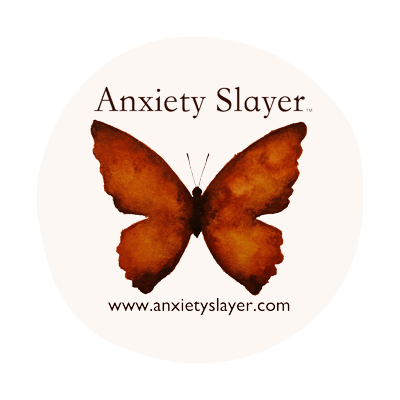
Anxiety Slayer is run by award-winning podcasters, authors, and anxiety coaches Shann and Ananga. On the blog, they share useful resources to help you find peace and tranquility in your life with a variety of anxiety-releasing exercises and supportive tools. They also offer guided meditations and private coaching sessions.

Tanya J. Peterson, MS, NCC, a counselor living with anxiety, writes this blog geared toward others going through similar experiences. Her writing expertly mixes the personal and professional, with topics ranging from causes and stigmas to checklists for controlling anxiety and panic attacks. The guest posts offer another perspective on anxiety disorders, making this a blog with a lot of insight. Tanya has covered a variety of topics, including insomnia and anxiety, stress eating, and anxious memories.
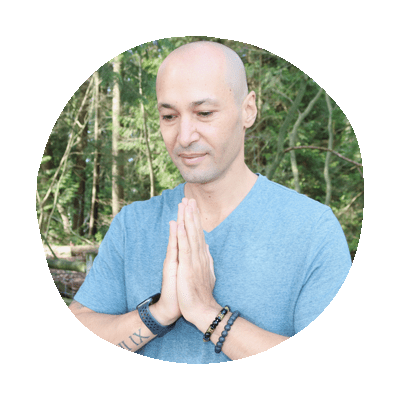
A certified cognitive behavioral therapy and neuro-linguistic programming coach, Dennis Simsek is the mind behind The Anxiety Guy. On the blog, he shares his knowledge about the causes of anxiety and his personal experiences with it. He’s covered topics like dealing with stress, how to speak to a partner with anxiety, health anxiety habits, and the trouble with emotional reframing.

Beautiful Voyager is dedicated to the overthinkers, and it’s filled with thoughtful articles addressing anxiety. Highlights include how to deal with an anxious boss, taking control of chronic migraine, morning anxiety, and even a poem about how anxiety affects the body.

With actionable information on things like how to stop a panic attack or practice guided meditation, Anxiety United is focused on specific steps and treatments that can help you manage generalized anxiety disorder, social anxiety, and more. Multimedia content on this blog comes in the form of written articles, videos, and audio files, all geared toward those living with anxiety.
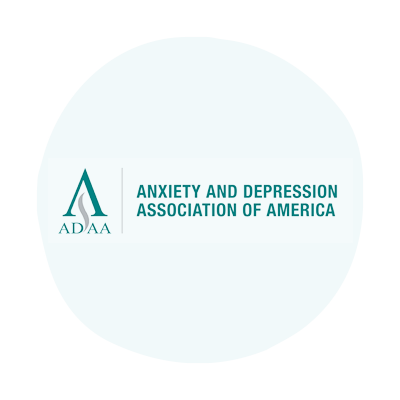
The Anxiety and Depression Association of America (ADAA) is an organization that aims to improve the lives of those living with anxiety, depression, obsessive-compulsive disorder (OCD), and post-traumatic stress disorder (PTSD). Their blog includes helpful tips and information from expert medical professionals. Visitors can search through blog posts by condition or population, making it easier to find exactly what you’re looking for. If you or a loved one are living with anxiety or depression, this is a great spot to find relatable information from experts in the field.

No Panic is a U.K.-based charity that helps those who have various anxiety disorders like OCD and panic attacks. In addition to the services they provide over the phone, No Panic has an extensive blog with new posts that publish every few days. Their blog includes tips for reducing stress, personal stories from people who deal with panic disorders, and information from medical professionals.
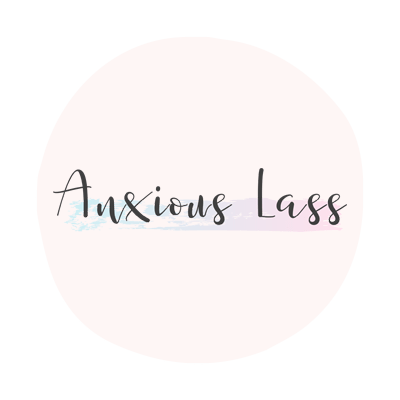
Kel Jean was diagnosed with severe social anxiety when she was 14 years old. She was inspired to start this blog as a way of connecting with other people dealing with social anxiety. Now, the blog has become a safe haven for all issues relating to mental health. Readers will find relatable lifestyle tips for dealing with social anxiety and other mental health conditions in everyday life.

Therapy For Black Girls is a site dedicated to providing information and support for the mental health of Black women and girls. Lack of accessibility and stigma around anxiety and mental health often prevent people, particularly Black women, from seeking help from a therapist. This blog aims to eliminate that barrier and provides visitors with articles ranging from topics about boosting self-esteem to how to reduce anxiety while living through a pandemic. Visitors will also find the Therapy For Black Girls podcast, hosted by licensed psychologist Dr. Joy Harden Bradford.
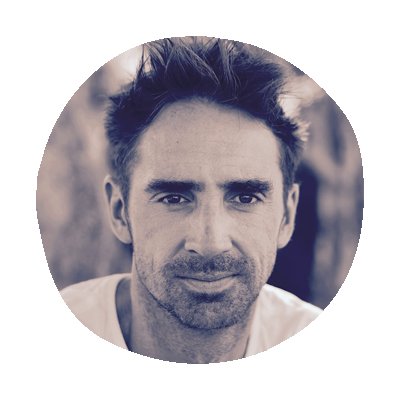
Nicky Cullen is no stranger to anxiety. For most of his 20s, Nicky lived in fear of when his next panic attack would come. Now, his blog and podcast take a no-nonsense approach to combating anxiety and depression. Readers will find a wealth of support and guidance for navigating out of debilitating anxiety.

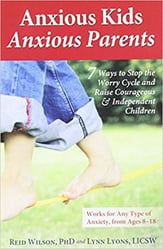
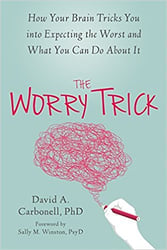
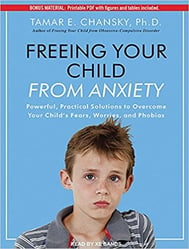

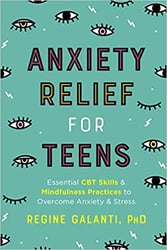
Through candid interviews, the power of film is used to tell the stories of teens who discuss their anxiety and its impacts on their lives and relationships, as well as how they’ve found solutions and hope. The film also includes a special interview with Michael Phelps, a mental health advocate and one of the greatest athletes of all-time. In addition, the documentary provides discussions with mental health experts about the causes of anxiety and its sociological effects, along with the help, resources and tools available.
Social media is a tool and social platforms are a place to connect, share and care… but is that really happening? The film features in-depth interviews with teenagers reflecting on their own social media use, as well as experts including Max Stossel, Head of Education and Content at the Center of Humane Technology, Leah Pearlman, co-creator of the Facebook “Like” button and Dr Jerry Bubrick, Senior Psychologist at Child Mind Institute.
Woven this is the very personal, first-hand account of a family’s tragic loss that inspired new legislation to turn the tide against this very real epidemic, the latest scientific and medical research, and strategies to help turn back the tide. With the enforced isolation, anxiety and increased screen time that has descended with the pandemic, we are living through a perfect storm for intense cyber-bullying, making this film even more vital viewing than before.
From a writer’s assistant at a top TV show to a Tech CEO and 911 dispatcher, the film explores how we can shift our culture and rebuild “It’s important to be uncomfortable at times in order to do this work well,” said Director Sarah Moshman. “Collectively, these are the stories that are so unbelievably important to tell in order for change to happen and I am so grateful for all of these people being willing to share their pain and triumphs with us, and inspired by their bravery and courage. There is a hunger for this content and this discussion world-wide and I believe that there can be no shortage of dialogue surrounding this”.